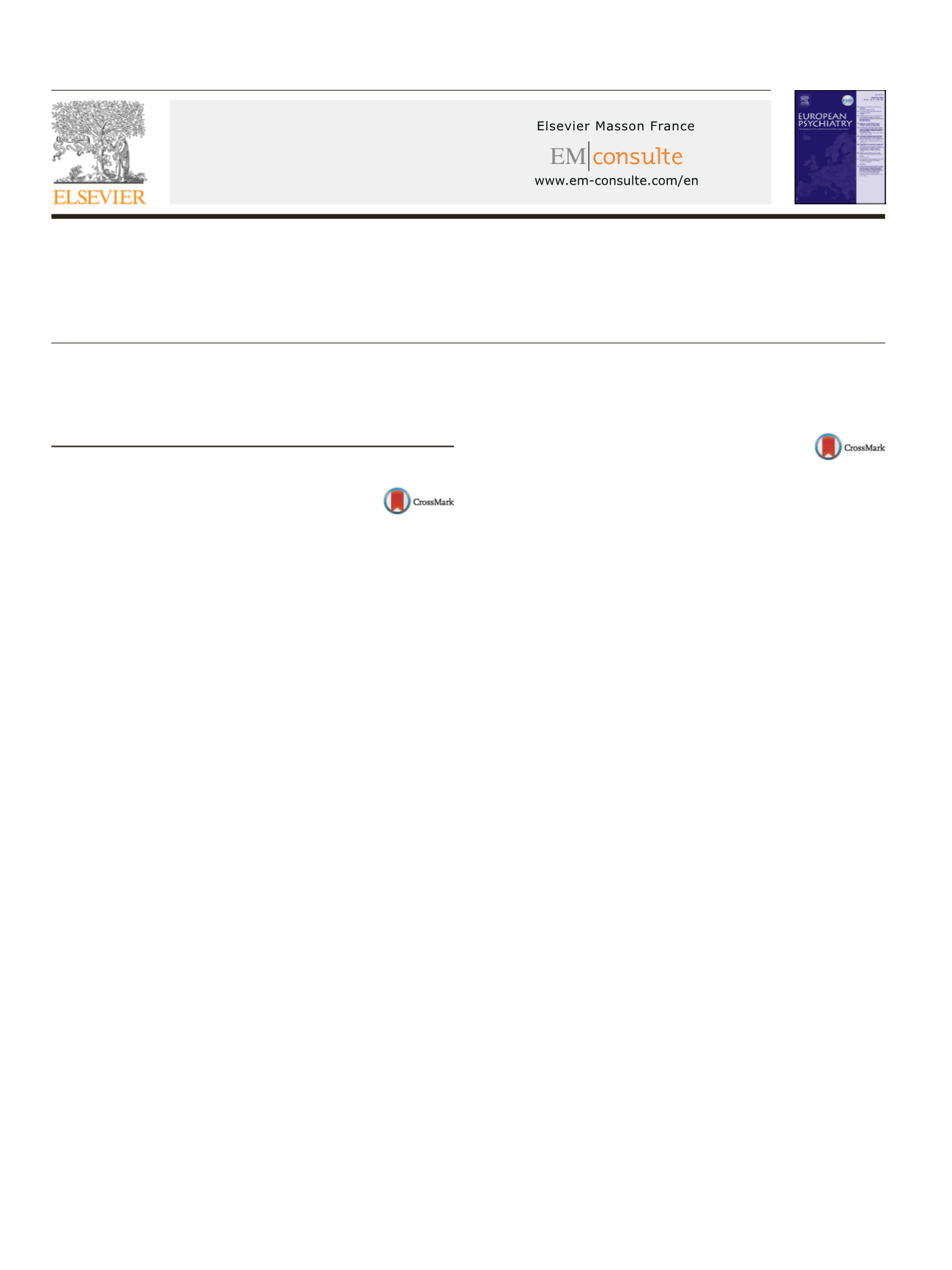
 European Psychiatry 41S (2017) S772–S846
European Psychiatry 41S (2017) S772–S846
Available online at
ScienceDirect
www.sciencedirect.com25th European Congress of Psychiatry
ePoster viewing part 7
e-Poster Viewing: Psychotherapy
EV1127
Cultural reflections in practicing
exposure therapy for social anxiety
R. Aly
Egyptian Association of Cognitive Behavior Therapy, Cairo, Egypt
Evidence-based practice of exposure therapy has long been
adopted as an effective therapy for treating anxiety disorders
including social anxiety. In many situations, it is the chosen ther-
apy for such a debilitating disease. Due to its proven efficacy
and readiness applicability, it has proven to be the 1st choice of
therapy for social anxiety across different life spans from ado-
lescents to geriatrics. Yet, cross-cultural differences have seldom
been considered in the approach towards managing social anx-
iety. Many differences lie between populations and countries in
defining what is accepted and what is not with regard to social
interactions. Even across the one country, many differences may
color the perception of appropriate social communication. Hence,
no one-size-fits all can be adopted here. Some interactions are
accepted and encouraged while others are basically banned. Thus,
during the application of exposure therapy, therapists shouldmod-
ify the conceptual framework while still trying to abide with the
fundamental notion of therapy of exposure experiments. In doing
this, many therapists may be challenged in their work. While
still lacking a strong body of research, clinical experience can
provide us with some helpful innovations for successful practice.
Our aim is to provide therapists and psychiatrists across the Arab
world with tools for applying successful therapy for social anxiety.
A series of case studies are discussed to present some innova-
tions in applying Cognitive Behavior Therapy for patients suffering
from social inhibitions. Moreover, essentials of past research are
reviewed and needs for further research directions in the field are
discussed.
Disclosure of interest
The author has not supplied his/her decla-
ration of competing interest.
http://dx.doi.org/10.1016/j.eurpsy.2017.01.1457EV1128
Therapeutic approach to complicated
grief–An example of group
psychotherapy in psychiatric patients
J. Soares
1, S.L. Azevedo Pinto
1 ,∗
, A.C. Pinheiro
2, S. Pacheco
3,
R. Curral
11
Hospital de S. João, Clínica de Psiquiatria e Saúde Mental, Porto,
Portugal
2
Instituto Universitário de Ciências de Saúde, Ciências Sociais e do
Comportamento, Paredes, Portugal
3
Faculdade de Psicologia e Ciências da Educac¸ ão da Universidade do
Porto, Faculdade de Psicologia e Ciências da Educac¸ ão da
Universidade do Porto, Porto, Portugal
∗
Corresponding author.
Introduction
Complicated Grief (CG) affects 7–10% of the griev-
ing individuals in the general population. However, the incidence
is much higher in psychiatric patients, reaching 70% in most sam-
ples. These individuals present many risk factors for such condition,
demanding a particular attention and treatment approach. Most
studies have shown that pharmacological treatment may help
relieving depressive and anxiety symptoms, although they do
not promote a consistent improvement of the grieving scenario.
Several meta-analyses have recognized different psychological
interventions as effective in dealing with the loss, decreasing
psychological suffering and promoting adaptation. It is accepted
that the benefits of the intervention overcome any possible
harm.
Objectives
To evaluate the impact of a group intervention (12
sessions) in pharmacologically stabilized psychiatric patients pre-
senting with CG.
Methods
Patient selection was performed through a clinical
interview and the fulfilment of the following psychometric tests:
Complicated Grief Inventory; the Impact of Events Scale; Beck
Depression Inventory; Social Support Scale. These assessment tools
were also used to evaluate the impact of the intervention per-
formed.
Results
After the psychotherapeutic intervention, therewere sig-
nificant differences in the levels of depressive and post-traumatic
stress symptoms.
0924-9338/


















